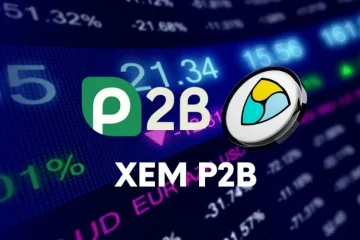The process of tracking packages has undergone a significant transformation over the years, evolving from simple paper records to sophisticated digital platforms that provide real-time updates. This evolution reflects broader technological advancements and the growing need for efficient logistics in an increasingly globalized world. In this article, we will explore the history of package tracking, examining how it has developed over time and the benefits it offers today.
Early Methods of Package Tracking
In the early days of postal services, package tracking was a rudimentary process. Before the advent of advanced technology, tracking a package relied heavily on manual records and human intervention. Postal workers would document the dispatch and receipt of packages using paper logs. Each package was logged at various points along its journey, creating a paper trail that could be referenced if a package went missing or was delayed.
This method, while effective to some extent, was fraught with challenges. The manual nature of record-keeping made it susceptible to human error, loss of records, and slow updates. Customers had to wait long periods to receive information about their packages, often relying on postal clerks to manually search through logs.
The Introduction of Barcoding
The introduction of barcoding in the late 20th century marked a significant leap forward in package tracking. Barcodes allowed for more efficient and accurate tracking of packages by automating the logging process. Each package was assigned a unique barcode that could be scanned at various points along its route. This not only reduced the potential for human error but also sped up the process of logging and retrieving package information.
Barcoding revolutionized the logistics industry by enabling more efficient handling of large volumes of packages. It also laid the groundwork for more advanced tracking systems, as the data collected through barcode scans could be fed into computer systems for better management and analysis.
The Digital Revolution
The rise of the internet and digital technologies in the 1990s and 2000s brought about another significant transformation in package tracking. Postal services and courier companies began to develop digital platforms that allowed customers to track their packages online. These platforms provided real-time updates on the status and location of packages, greatly enhancing the customer experience.
With digital tracking, customers could enter a tracking number on a website and instantly see where their package was and when it was expected to arrive. This transparency and accessibility marked a significant improvement over previous methods, offering peace of mind and greater convenience.
Advanced Tracking Technologies
In recent years, package tracking has continued to evolve with the integration of advanced technologies such as GPS, RFID (Radio Frequency Identification), and IoT (Internet of Things). These technologies provide even more precise and real-time tracking capabilities.
GPS tracking allows for the exact location of a package to be monitored throughout its journey, while RFID tags can store and transmit detailed information about the package’s contents, origin, and destination. IoT devices can monitor environmental conditions such as temperature and humidity, which is particularly important for sensitive shipments like pharmaceuticals and perishable goods.
These advancements have not only improved the accuracy and reliability of package tracking but have also enabled new services such as predictive delivery times and proactive notifications about delays or issues.
The Role of Digital Platforms
Digital platforms play a crucial role in the modern package tracking ecosystem. One such platform, Package Tracking, exemplifies the capabilities of contemporary tracking solutions. This site allows users to track packages from multiple courier services in one place, providing a unified and seamless tracking experience. Users can simply enter their tracking number to receive detailed updates about their package’s status and location.
Benefits of Modern Package Tracking
The evolution of package tracking has brought numerous benefits for both businesses and consumers. For businesses, efficient tracking systems enhance operational efficiency, reduce costs, and improve customer satisfaction. They can manage their inventory better, plan logistics more effectively, and respond to issues promptly.
For consumers, the ability to track packages in real time provides peace of mind and convenience. They can plan their schedules around delivery times, avoid missed deliveries, and have confidence that their packages will arrive as expected.
Moreover, the transparency offered by modern tracking systems fosters trust between businesses and customers. When customers can see the progress of their shipments and receive timely updates, they are more likely to have a positive experience and continue using the service.
Future Trends in Package Tracking
Looking ahead, the future of package tracking promises further advancements driven by emerging technologies such as artificial intelligence (AI) and blockchain. AI can enhance predictive analytics, enabling more accurate delivery estimates and proactive issue resolution. Blockchain, with its secure and transparent ledger system, can improve the traceability and accountability of packages, reducing fraud and errors.
Additionally, the increasing use of drones and autonomous vehicles for deliveries will introduce new dimensions to package tracking, requiring advanced systems to monitor and
The Continuous Evolution of Package Tracking Enhances Efficiency and Customer Satisfaction
In conclusion, the history of package tracking reflects a journey from manual paper records to sophisticated digital platforms that offer real-time updates and comprehensive visibility. Platforms like packagetracking.online highlight the capabilities of modern tracking solutions, providing seamless and integrated services for users. As technology continues to advance, we can expect package tracking to become even more efficient, reliable, and integral to the logistics industry, benefiting businesses and consumers alike.




